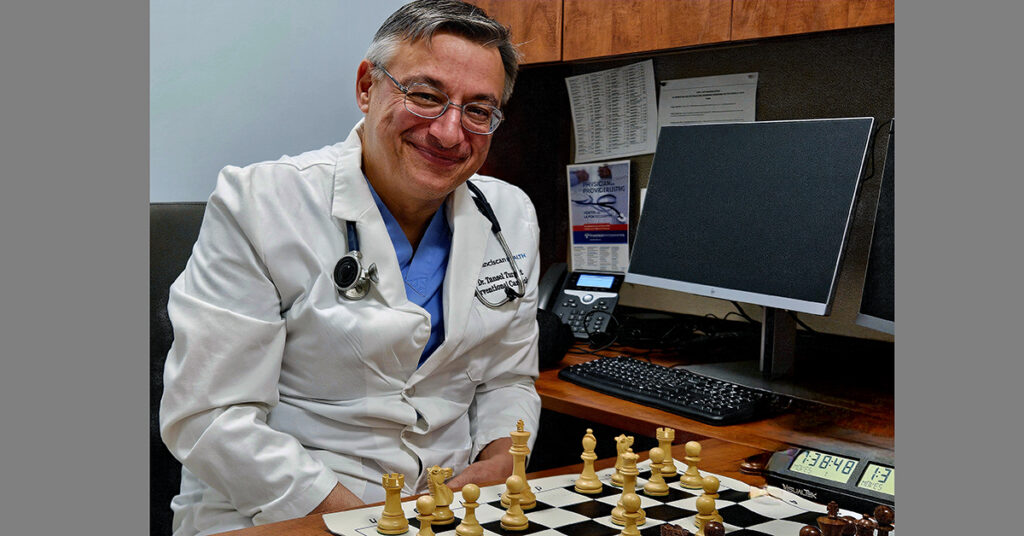Health centers improve access and offer a holistic approach.
by Steven Davidson
Few topics have been in the headlines more than health care during the past year, as the implementation of the Affordable Care Act has picked up steam. The political controversy continues even after the conclusion of the first open enrollment period–meanwhile, health-care providers are quietly working to achieve the ultimate aims of reform: increasing access to care and reducing costs by keeping people healthy.
The region's health centers expect to play a significant role as changes take hold. They strive to give area residents in need of routine care an appropriate alternative to the hospital emergency room. They're working to remove barriers that make it difficult for some people to get the care they need. They hope to help patients get chronic conditions such as diabetes and high blood pressure under better control, another key to avoiding more costly care. And they're increasingly focusing on the big picture of wellness.
“We need to go from a sick-care system to a well-care system,” says Dr. Janet Seabrook, executive director of Community HealthNet. That means tackling chronic conditions through better access as well as patient education. “You're able to keep people out of the ER, which is going to reduce the cost for everybody.”
“The ultimate goal is to keep people healthy,” agrees Dr. John Johnson, physician and owner of the Immediate Care Center in Schererville. His operation differs in some significant ways from Community HealthNet, which is a Federally Qualified Health Center that receives government support for its mission of serving the underserved. But these two clinics' ultimate aim is more similar than different: Deliver care conveniently, striving to provide patients with the right level of care at the right time, so they can avoid more costly alternatives.
One of the most frequently cited potential benefits of health insurance reform is keeping people out of the ER who don't really need to be there. Those who are uninsured, or underinsured, often go there for non- emergency needs because in most cases the ER is required to provide services regardless of ability to pay, and also because the ER is open 24/7 when other care sites are not. “Well over 60 percent of the patients who show up in the ER don't need to be there,” says Johnson, whose medical specialty is emergency medicine. “You have a lot of people getting very expensive care.”
That was one of the reasons why he and others opened the first Immediate Care Center in the early 1980s in Greenwood (most locations of the Immediate Care Center chain have since been acquired by the Franciscan Alliance, though Johnson still owns the Schererville location). Back when the business began, he says, an ER trip might have cost a minimum of $120, a lot to pay for treating an ear infection that could easily be handled in a clinic or physician's office. Today, the ER bill could be $800 or more. Immediate Care Center “was based on the concept that a lot of patients really didn't need that level of care or cost,” Johnson says.
Getting more people insured can be a good solution for those patients who can't afford more routine care and end up in the ER when they need “free” treatment. But the broader solution is not that simple. When the state of Massachusetts moved to more universal insurance coverage through a system similar to what the Affordable Care Act has created on a national basis, ER usage did not decline right away, many studies found. In some cases, those newly insured still went to the ER because that was where they knew to go. What's more, simply getting coverage doesn't automatically translate into getting the routine, preventive care or early treatment that can keep an ER trip from becoming necessary. Those issues are more related to behaviors and education, and the need for a wellness focus rather than simply treating ailments.
That's a role the region's clinics are eager to play as the future of health care unfolds. The idea is to connect with patients early and regularly, providing not just care but also education on everything from diabetes to high blood pressure, depending on the patient. Do that, says Seabrook, “and you reduce the incidence of mortality related to heart disease, renal disease, stroke, heart attack.”

Another thing clinics can do that's tough for ERs is provide diligent follow-up. HealthLinc Community Health Centers has achieved certification as a patient-centered medical home, says CEO Beth Wrobel, a concept that focuses on strong patient connections and coordination of care. Among the priorities is ensuring that patients follow up with everything from tests to appointments with other providers.
“A lot of people don't follow through,” Wrobel says. “In a patient-centered medical home, we're going to follow up. If you do go get that lab done, we're going to document the result, and if we don't get the result we'll call you.”
When patients have trouble getting the care they need, her staff tries to figure out why and resolve the problem. Transportation issues, for example, can stand in the way of effective medical care and healthy outcomes. “We can find out what are the barriers to the care they need.”
Her health center was an early adopter of electronic medical records. That helps keep better track of care within the office, and beyond that, through Indiana's cutting-edge health information exchange, can help the center keep track of care patients receive elsewhere, too. “We're able to see the big picture. If one of our patients goes to Indianapolis and gets treated, we get the information.”
Caregivers are becoming more and more attuned to the need for holistic care–the mind-body-spirit focus recognizing that good health goes beyond physical medical care. That means an ever-bigger role for organizations such as Regional Mental Health Center. Bob Krumwied, president and CEO, notes that his organization has received designation as a Federally Qualified Health Center, which means that it now is better equipped to serve not just the behavioral health needs of patients, but also physical health.
Krumwied says Regional Mental Health Center takes things a step further, focusing on other social determinants of health. It's involved in everything from child-care vouchers to Head Start to a fatherhood program that tries to help reunite dads with their kids. It's a truly big-picture approach to helping community members achieve better health. “These are all wrapped up in the belief that in order to have true health you have to be healthy in body, spirit and mind,” he says.
Providers, policymakers and insurers alike are really starting to realize the strong connection between physical health and behavioral health. “You can't separate one from the other,” Krumwied says. “If you do, you end up driving up costs on both ends and don't fix either problem. You can no longer practice on an island.”

As for the access issue, enhancing convenience is a key to a better patient experience and, ultimately, better health. That's the thinking behind the Valparaiso Health Center, a multispecialty center recently opened by St. Mary Medical Center. Janice Ryba, St. Mary CEO, notes that the facility includes a variety of provider offices, a full range of imaging and lab services, an urgent care center and yoga classes, among other things.
Equally important is the coordination of the services. “We can assist with additional appointments after they see their primary-care provider,” she says. “We're scheduling many other appointments prior to them leaving.” In many cases, multiple tasks can be accomplished in the same visit, and lab results in some cases can be delivered while the patient is still in the building. One-stop care is convenient, boosts patient satisfaction, and can help with the follow-through that is so important to enhancing health.
Helping more people gain easier, more complete access to care benefits more than just the patients themselves, Wrobel observes. The business community is another beneficiary. “If you're in a community that has a lot of sick people, that can lead to people not being able to go to work,” she says. And of course, the better the health of the people on the company medical plan, the lower the cost to the business.
Seabrook agrees. Her organization operates a clinic in a high school, and that benefits not just the kids who use it, but also their parents and the companies that employ their parents. How? In many cases, a child with a medical need can be seen right there at school, and return to classes, without needing the parent onsite. Otherwise, she says, “parents would have to leave work to get their child from school, and if they couldn't get to the doctor that day they'd have to miss another day of work.” The presence of the clinic means fewer lost workdays for parents, more days in school for kids, and ultimately, higher academic achievement and graduation rates.
That, in a nutshell, describes the growing understanding of the interconnected web between physical health, mental health and other aspects of quality of life. Tackle the health part of the equation and you may benefit more than just health. Take care of social issues, and better health may follow. It's a philosophy that's more holistic than ever, and as Wrobel notes, “I think that will change the landscape of health care.”



